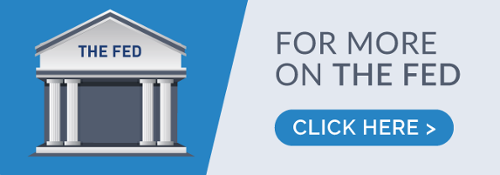On March 31, the Federal Reserve announced the creation of another new liquidity facility; this one is aimed at central banks and international institutions.
This new facility is a temporary repurchase agreement facility for Foreign and International Monetary Authorities (FIMA), and is called the FIMA Repo Facility. It is intended to help support the smooth functioning of financial markets, including the US Treasury market, and thus help maintain the supply of credit to US households and businesses.
A global solution with domestic implications
The Fed is functioning as a global central bank, as we believe it should in view of the US dollar’s reserve status. But the FIMA Repo Facility could have an important domestic benefit—a better-functioning domestic bond market. It also should help stabilize foreign US dollar markets and support foreign economic conditions, which could benefit the US economy through many channels, including confidence and trade.
Why it’s important
 While other central banks can create money in their own currencies, only the Fed can create US dollars. Companies and banks in other countries cannot get dollars from their central banks, unless the central banks sell Treasurys.
While other central banks can create money in their own currencies, only the Fed can create US dollars. Companies and banks in other countries cannot get dollars from their central banks, unless the central banks sell Treasurys.
In current circumstances, foreign central banks have been selling Treasurys to meet a rush for US dollars, which has disrupted the bond market. The FIMA Repo Facility is the Fed’s solution to this problem. It allows the Fed to lend US dollars to foreign central banks, thus relieving the shortage of US dollars and helping to stabilize global financial markets.
I view this new facility as a complement to, and an extension of, the swap lines the Fed set up with major central banks during the last three weeks of March. This new facility allows central banks without explicit swap lines to access US dollar liquidity. As with the swap lines, the Fed’s lending goes directly to the central banks and not to any foreign private-sector institution.
Market implications
The FIMA Repo Facility reduces the need for foreign central banks to sell their Treasury securities outright and into illiquid markets to raise US dollars. This should help prevent disruptions to the Treasury market and upward pressure on yields.
This new facility is also positive for emerging market economies, whose central banks will have easier access to US dollar liquidity to help relieve strains in their own bond markets and banks.
By easing the run for the US dollar, these Fed facilities should relieve some of the upward pressure on the US dollar.
How it works
The FIMA Repo Facility would allow foreign central banks to temporarily raise dollars by selling US Treasurys to the Fed and agreeing to buy them back at the maturity of the repurchase agreement. The term of the agreement will be overnight, but can be rolled over as needed.
The transaction would be conducted at an interest rate of 25 basis points over the interest rate on excess reserves (currently at 0.10%), which generally exceeds private repo rates when the Treasury market is functioning well. As a result, the facility would primarily be used only in unusual circumstances.
The repo transactions are fully collateralized by US Treasurys, so the Fed is taking no credit risk. The transactions are in US dollar terms only, so the Fed is taking no exchange rate risk.
All operations in this new facility will be reported in the Fed's weekly reserves statement.

Source: https://www.federalreserve.gov/newsevents/pressreleases/monetary20200331a.htm
MALR025223



 While other central banks can create money in their own currencies, only the Fed can create US dollars. Companies and banks in other countries cannot get dollars from their central banks, unless the central banks sell Treasurys.
While other central banks can create money in their own currencies, only the Fed can create US dollars. Companies and banks in other countries cannot get dollars from their central banks, unless the central banks sell Treasurys.
